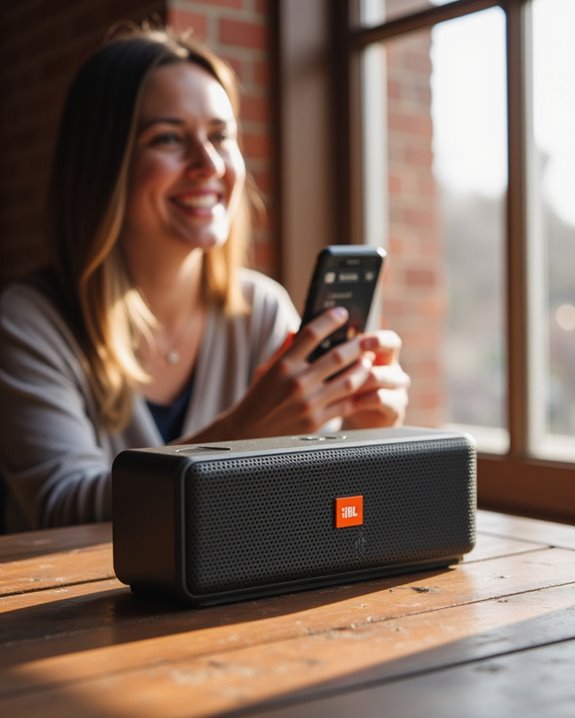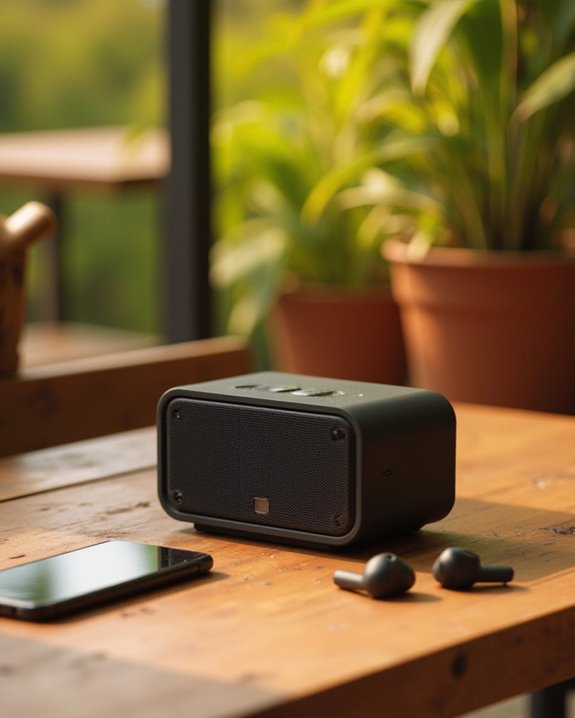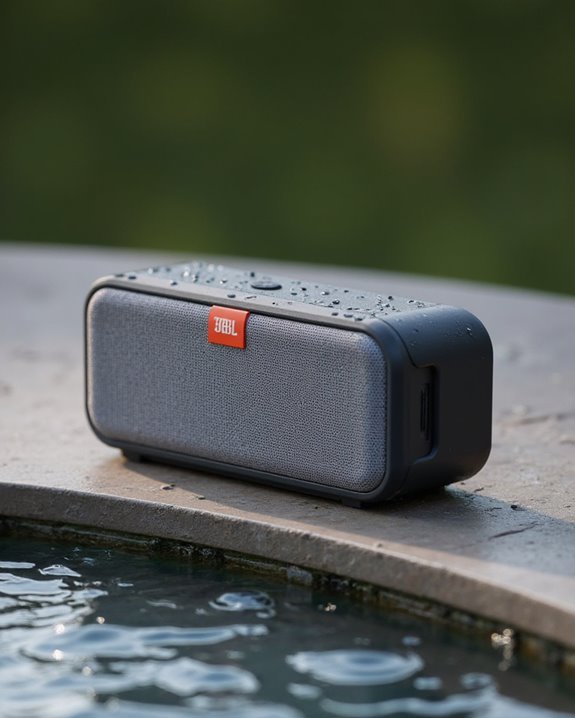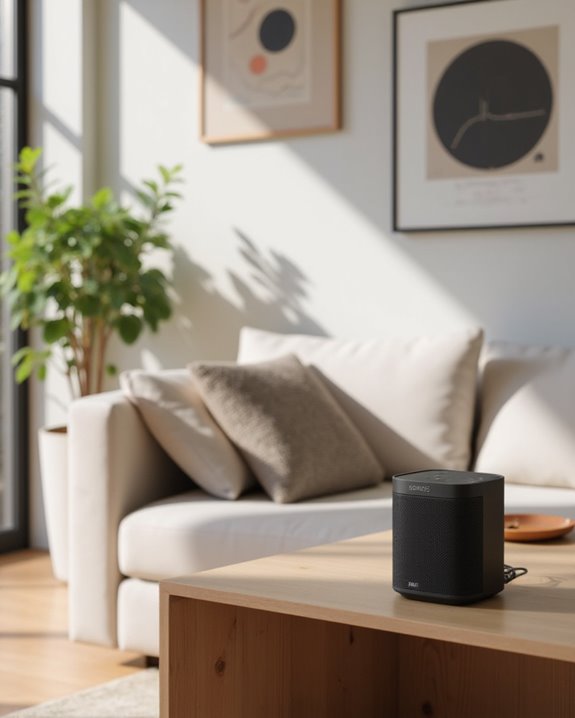Microphone cables differ visibly from speaker cables in several key ways. Look for diameter (microphone cables are under 6mm while speaker cables are thicker), shielding (microphone cables have braided or foil shielding), and conductor gauge (microphone cables use thinner wire than speaker cables’ 16-18 AWG). Examine connectors: microphone cables typically use XLR connectors while speaker cables often use SpeakOn or unshielded terminations. Using the wrong cable type can introduce noise, signal loss, or even damage equipment in high-power applications.
Key Takeaways
- Microphone cables are thinner (under 6mm diameter) and more flexible, while speaker cables are thicker and more robust.
- Examine the shielding—microphone cables have foil or braided copper shielding, while speaker cables typically lack shielding.
- Check conductor thickness—microphone cables use thin conductors (under 0.22mm), while speaker cables use thicker 16-18 AWG wire.
- Look for connectors—microphone cables often use XLR (balanced) connectors, while speaker cables use unbalanced connectors like SpeakOn.
- Microphone cables have twisted pair design for noise rejection, while speaker cables have simpler two-conductor unbalanced design.
The Basic Physical Differences Between Microphone and Speaker Cables
The physical differences between microphone and speaker cables are readily apparent once audio professionals know what to examine. Microphone cables feature a more slender profile with greater flexibility, typically measuring under 6mm in diameter, while speaker cables present a thicker, more robust build to accommodate heavier gauge conductors. When inspecting the internal construction, balanced cables like microphone cables contain twisted pair conductors with thorough shielding systems, often incorporating both foil and braided layers for superior noise rejection. Speaker cables, conversely, utilize a simpler two-conductor design without complex shielding, prioritizing current-carrying capacity over interference protection. The insulation layers also differ markedly, with microphone cables employing multiple protective barriers around their delicate 0.22mm conductors, whereas speaker cables feature minimal insulation surrounding their substantial 16-18 AWG wire cores.
Understanding Cable Shielding and Its Purpose
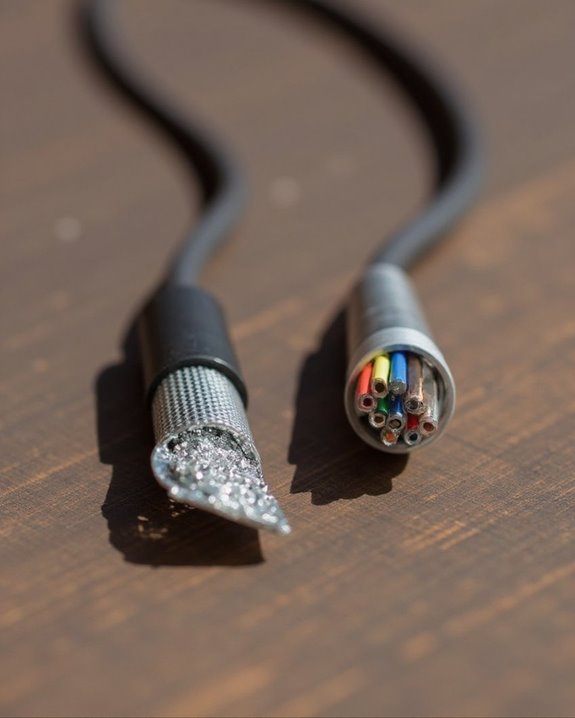
Effective cable shielding represents a critical component in audio signal transmission systems, particularly for low-level sources like microphones where signal integrity must be preserved. Microphone cables utilize specialized shielding designs—typically foil or braided copper—that create a protective Faraday cage around the internal conductors, preventing electrical noise and electromagnetic interference from corrupting the delicate audio signal.
Unlike speaker cables that handle robust, high-voltage signals, microphone cable shielding is essential because microphone signals often operate below -50dB, making them vulnerable to environmental interference. In balanced cable configurations, this shielding works in conjunction with the twisted-pair conductors to reject common mode noise, particularly 60Hz hum from power sources. Professional audio environments rely on this shielding to maintain signal clarity over long cable runs where interference risks increase substantially.
Conductor Gauge and Current Handling Capabilities
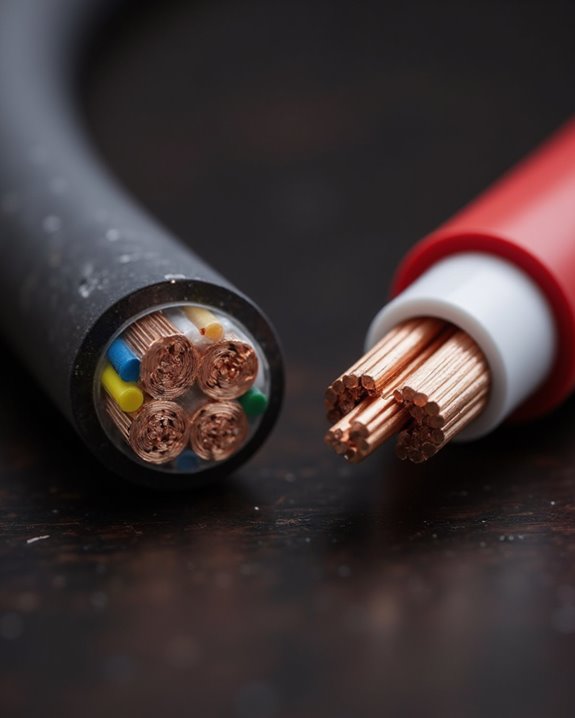
Significant differences in conductor gauge separate microphone cables from speaker cables, directly affecting their current handling capabilities and appropriate applications. Microphone cables, often found in XLR cables, utilize thinner conductors under 0.22mm core thickness, specifically designed for low-level audio signals rather than power transmission. These slender wires prioritize signal integrity while sacrificing current-carrying capacity.
Speaker cables, conversely, employ heavier gauges (typically 16-18 AWG) engineered to manage substantial currents and voltages exceeding 100 volts without significant resistance losses. Using microphone cables for speaker applications creates dangerous limitations, as their thinner conductors dissipate excess wattage as heat, potentially causing equipment failure. For ideal performance, speaker cables should maintain 18 AWG or thicker gauge, especially when transmitting power over distances, ensuring proper current handling without degradation of audio signals.
Balanced vs. Unbalanced Cable Design

Beyond conductor gauge and current capacity, cable internal structure represents another key distinguishing factor between microphone and speaker applications. Microphone cables typically feature balanced designs, utilizing two signal conductors that carry identical but phase-inverted signals, plus a ground wire, enabling effective noise cancellation through common mode rejection. This sophisticated arrangement, found in XLR microphone and TRS cable configurations, particularly excels at preserving low-level signals while eliminating unwanted interference like 60Hz hum.
Speaker cables, conversely, often employ unbalanced cables with a single signal conductor and ground wire, making them more susceptible to electromagnetic interference on longer runs. The twisted pair configuration in balanced microphone cables reduces capacitance and enhances signal quality, whereas unbalanced designs exhibit higher capacitance due to their simpler construction. Professional audio environments consistently choose balanced connections for microphones due to superior noise rejection capabilities in high-interference settings.
Connector Types That Identify Cable Purpose
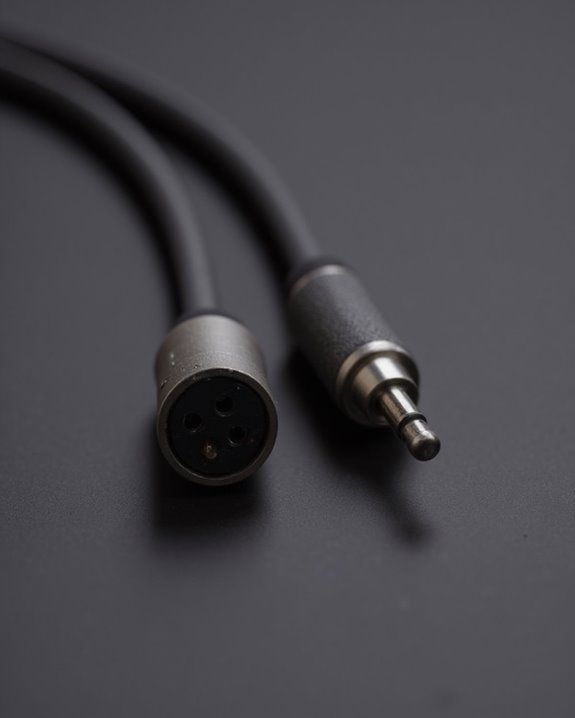
Connector types serve as the most immediate visual indicators when distinguishing between microphone and speaker cables in audio systems. The XLR connector, with its three pins and secure locking mechanism, is designed specifically for balanced audio cable connections, making it ideal for microphone signals that must travel long distances with minimal interference. In contrast, SpeakOn connectors, featuring a twist-lock design to prevent accidental disconnection, identify cables intended for high-power speaker applications.
When establishing proper audio connection between components, the presence of TS connectors (with one black ring) indicates unbalanced instrument cables, while TRS connectors (with two black rings) may serve balanced microphone purposes. Professional audio technicians recognize that selecting the appropriate cables to connect equipment requires matching these distinctive connector types to their intended application, ensuring maximum signal integrity throughout the audio chain.
In contemporary audio setups, speakers with wireless microphones often rely on Bluetooth 5.0 connectivity for enhanced versatility and reduced cable dependency.
Impedance Characteristics and Signal Level Considerations
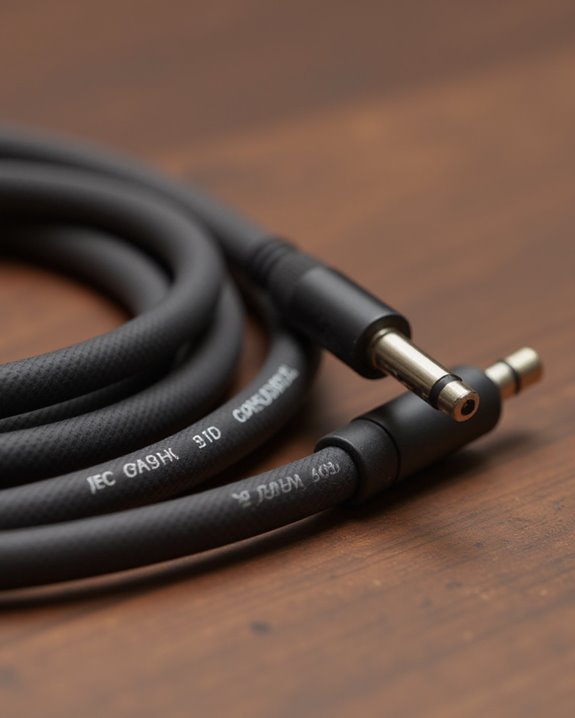
Impedance characteristics represent a fundamental factor in distinguishing microphone cables from speaker cables, serving as critical differentiators even when visual identification proves challenging. Microphone cables feature impedance ratings between 150-600 ohms, optimized for handling delicate signals around -50 dB, while AUDIO cables for speakers operate at much lower impedance levels of 4-16 ohms to manage powerful +30 dB signals efficiently.
When evaluating audio equipment connections, understanding these distinctions becomes essential for proper system configuration. Microphone cables employ balanced designs specifically to protect vulnerable low-voltage signals from interference over distance, whereas speaker cable performance relies on current-handling capacity rather than noise rejection properties. Impedance mismatches in microphone applications can severely compromise signal quality, particularly with sensitive equipment like ribbon microphones, while speaker cables remain relatively immune to such effects due to their inherently stronger signal transmission characteristics.
Performance Impact When Using the Wrong Cable Type
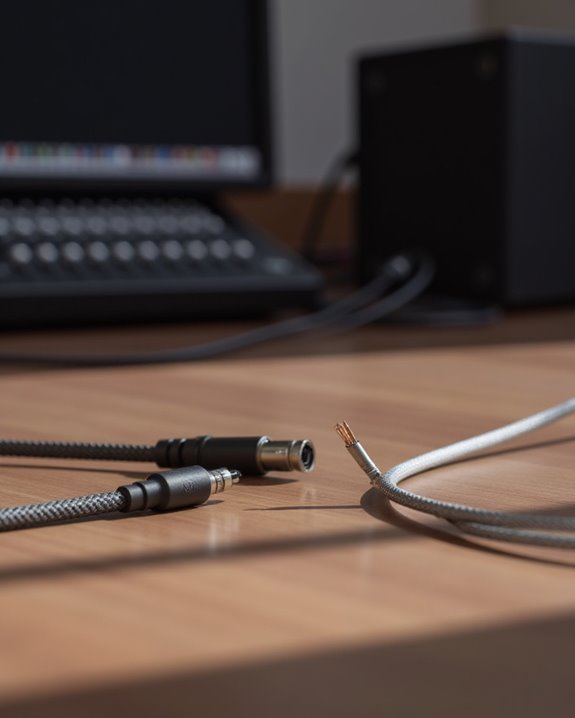
The significant consequences of using incorrect cable types in audio setups extend far beyond mere inconvenience, creating potential hazards for both equipment and sound quality. In professional audio production, microphone cables used for speakers can overheat dangerously as their thin gauge (under 0.22mm) fails to handle high voltages, potentially causing equipment failure while reducing output by several decibels. Conversely, speaker cables employed for microphone connections introduce substantial noise into the signal path, allowing 60Hz hum and electromagnetic interference to corrupt sensitive low-level signals.
Audio engineers recognize that balanced microphone connections require proper shielding for common mode rejection, which unshielded speaker cables cannot provide. This critical difference becomes particularly evident in line-level signal transmission, where pro audio standards demand appropriate cable selection to maintain signal integrity and prevent frequency response errors.
Testing and Identifying Unmarked Cables
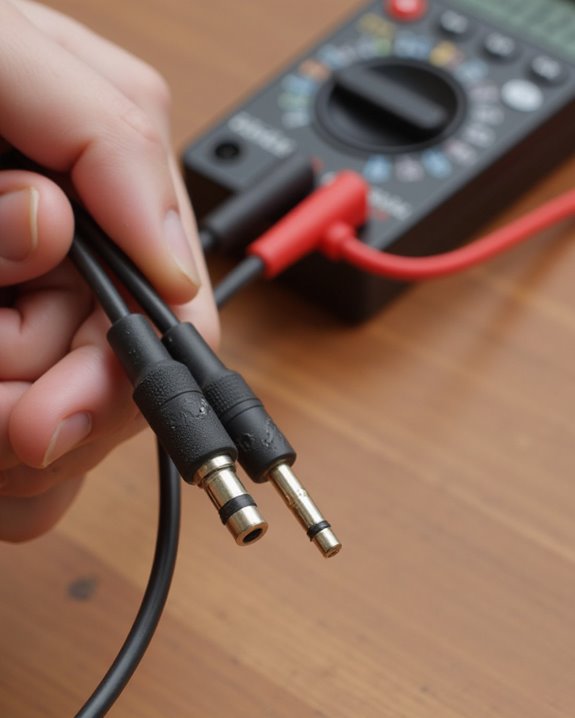
When faced with a collection of unmarked cables in an audio setup, distinguishing between microphone and speaker types becomes a practical necessity after recognizing their distinct operational requirements. Technicians can visually examine the cable’s exterior for the telltale braided or foil shielding present in microphone cables but absent in most speaker wires, similar to how quality Home Audio systems require proper cable identification. Physical inspection of conductor count reveals microphone cables typically contain three conductors (two signal wires plus shield), while speaker cables feature just two. Measuring wire gauge with calipers shows microphone cables use thinner cores than the heavier 16-18 AWG speaker variants. Unlike guitar cables, which share characteristics with microphone cables, speaker wires lack gold plated connectors and balanced XLR terminations designed for noise rejection in signal-level applications. In professional environments like virtual conferences, selecting the appropriate cable ensures optimal performance for devices featuring AI-powered microphones.
Common Applications and Best Practices for Each Cable Type
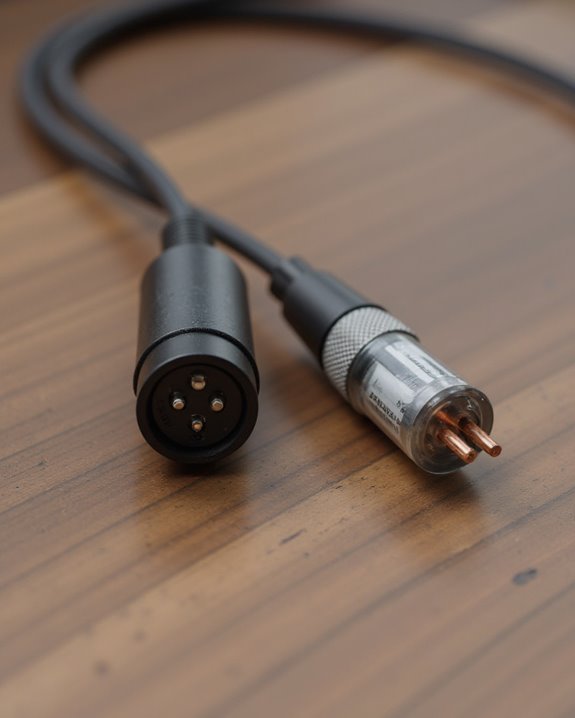
Practical separation of microphone and speaker cables in audio production environments guarantees best signal quality and system performance across different applications. Microphone cables are commonly used for low-level signal transmission, connecting sensitive audio sources to mixers or digital audio interfaces, with balanced XLR configurations essential for runs exceeding 20 feet to reject unwanted interference. In contrast, speaker cables serve high-power applications, delivering amplified signals safely to speakers in professional venues and home theater setups.
Best practices dictate using shielded, balanced cables for microphones to minimize 60Hz electromagnetic interference, while speaker connections benefit from unshielded, appropriately gauged wire (16-18 AWG for runs under 50 feet). For ideal results, keep instrument cables under 20 feet, match speaker cable gauge to power requirements, and never interchange these cable types despite their similar appearances. Moreover, selecting the right cables can enhance the effectiveness of sound enhancement technologies in audio systems like the AIYIMA A07.
Cable Construction Materials and Quality Indicators
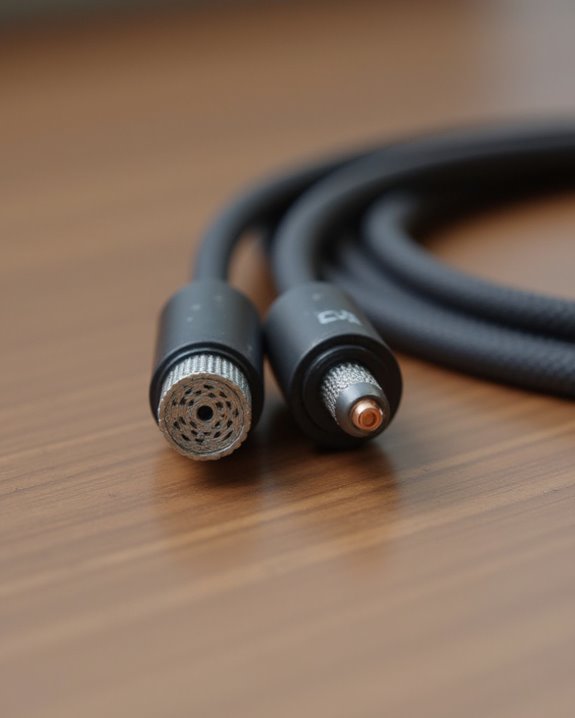
Understanding the physical composition of audio cables reveals why they perform differently in various applications. Microphone cables utilize shielded twisted pair conductors, with copper wires protected by foil or braid shielding that blocks RF interference. These balanced configurations employ insulated twisted pairs that reduce capacitance and enhance common mode rejection, essential for preserving delicate audio signals.
Speaker cables, conversely, feature unshielded, thicker-gauge copper wires (typically 16-18 AWG) designed to handle high current with minimal resistance. Quality microphone cables exhibit 100% shielding coverage and gold-plated connectors for superior connectivity, while premium speaker cables prioritize oxygen-free copper to prevent oxidation under high-voltage conditions. The flexibility of microphone cable materials contrasts with the rigid construction of speaker cables, which must withstand heat generated during sustained power transmission.
Frequently Asked Questions
Are Speaker and Mic Cables the Same?
No, they differ fundamentally. Cable origins reveal distinct designs—microphone cables have shielding for low-level signal types, while speaker cables feature thicker conductors for power transmission. Quality factors include appropriate shielding and gauge for each application.
How to Tell the Difference Between a Speaker Cable and Instrument Cable?
Speaker cables typically have thicker gauge wiring for unbalanced signals and lack shielding, while instrument cables are shielded with thinner conductors. Connector types often differ too – speakers use spade connectors or speakON plugs.
Why Are Speaker Cable and Microphone Cable Not Interchangeable?
Like star-crossed lovers, microphone and speaker cables serve different masters. Historical uses dictated their distinct material choices, with each optimized for specific impedance effects—one for delicate signals, the other for powerful currents.
How to Identify Speaker Wires?
Speaker wires can be identified by their thicker wire gauge (typically 16-18 AWG), distinctive color coding (often red/black or copper/silver), and polarity marks that guarantee proper connection between amplifiers and speakers.


